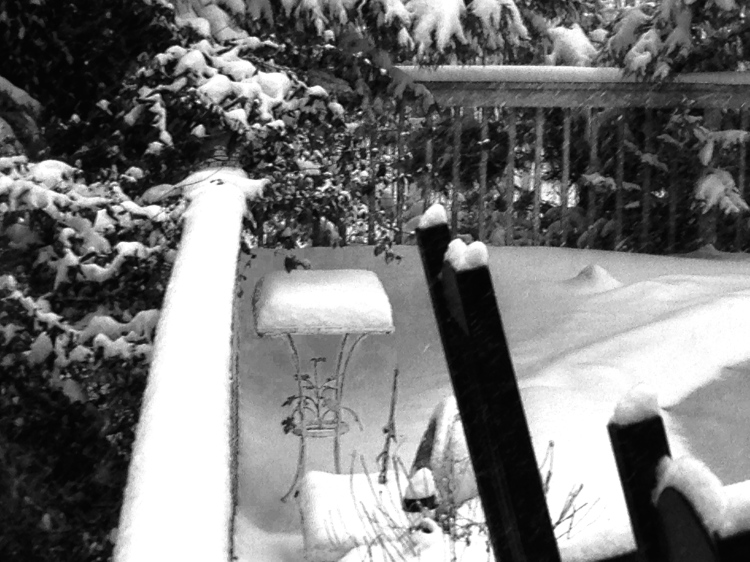As I write this, it is spitting out the first winter precipitation for our area (North Carolina Piedmont). We tend to get overly excited over just one flake or ice pellet. The bread flies off the grocery store shelves with just a hint of winter in the forecast. Milk is equally in high demand. We all learned that lesson several years ago when we had a whopper snow that kept all of us in our homes for ten days.

A rare event in NC – enough to clear grocery store shelves!
Okay, I know all of you who live in colder climates are laughing at us. And believe me, even we who are snow starved cried in sympathy with the folks in Buffalo over the excess snow they had earlier this season. Too much of anything is bad, just as is too little. Which brings me to my point; what does this have to do with writing?
I recently read an excellent blog about the proper amount of description to use when developing a story, characters, or setting. There were points made on both sides of the issue; all of them valid.
For me, less is more. I believe in the reader’s ability to fill in the details according to their take on the written word. Now, I’m not talking basics here. We all need to know the character’s sex, age, location setting, and basic personality traits. But beyond that, what is needed?
There is a very prolific author whose stories I enjoy. But, I’ve noticed that in more recent books, some of the descriptions are overkill; way too many words to describe a relatively unimportant action, or trait. And that is when I start skipping pages to get on to the meat of the story.
There is another prolific author that I also enjoy reading and this person has a skill I truly admire; that of minimal description. With one or two words, this author paints a complete picture that I can not only see in my head, but feel as if I know the character or scene in question.
So, which way should an author go to be successful in writing? My preference is obvious. But, what about yours? Next time I will discuss some ideas about developing one’s descriptive skills. Meanwhile, I hope each and every one of you has the best Christmas holiday ever and a New Year filled with the best of the best of God’s blessings!

